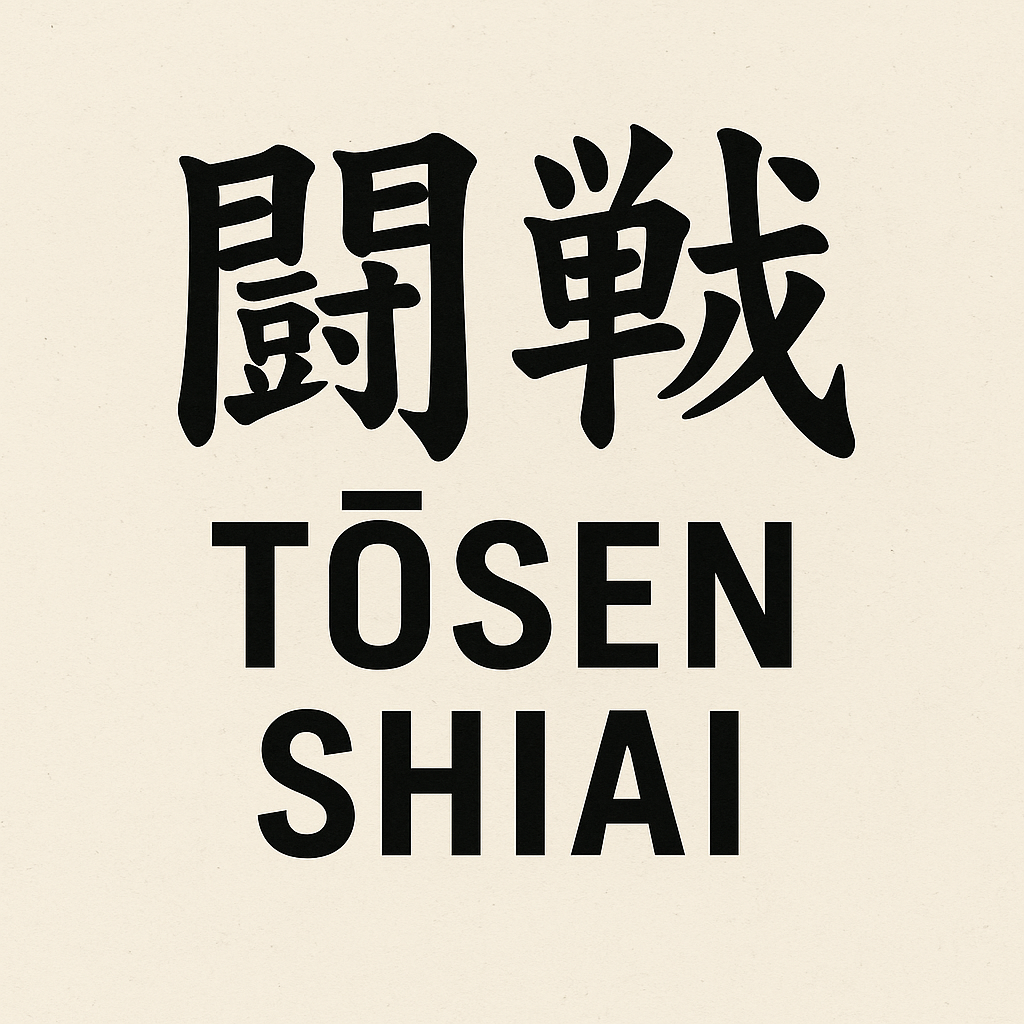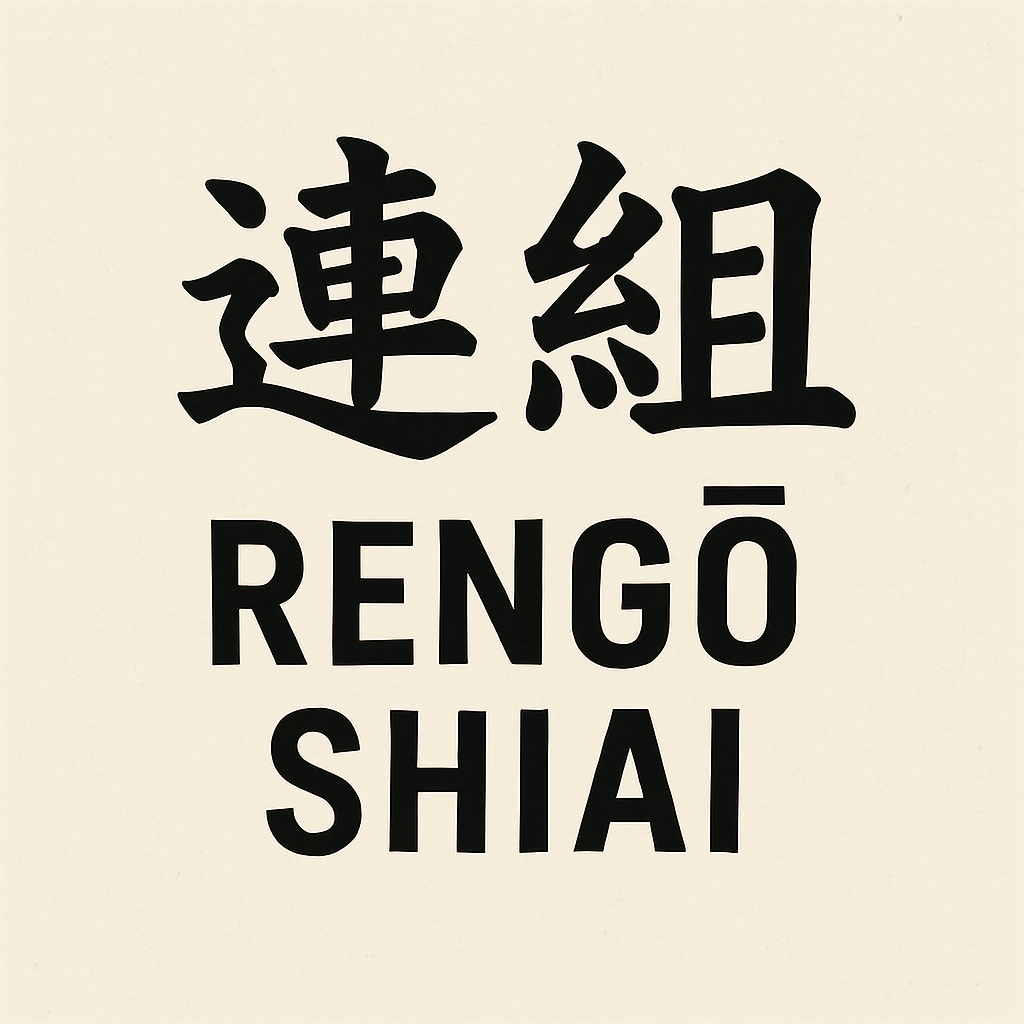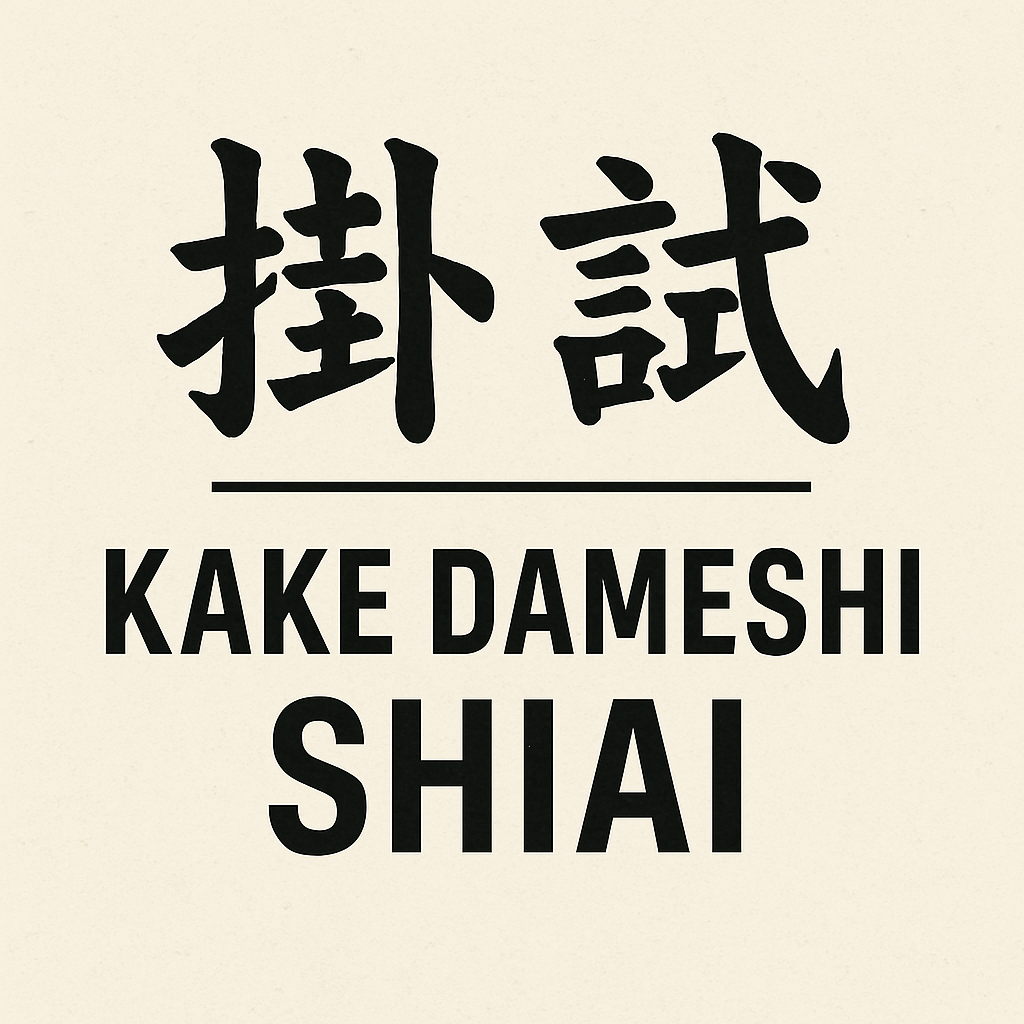Tōsen Shiai (闘戦試合) – (Amateur Combat Karate) translates to “Battle Match”
📖 Philosophy

Tōsen Shiai (闘戦試合) (Amateur Combat Karate) translates to “Battle Match” – a format designed to bridge traditional karate with modern full-contact fighting, made accessible and safe for amateurs. The focus is on dynamic striking, tactical clinch work, and controlled takedowns, without ground fighting.
🧑🎓 Who Can Compete
- Open to practitioners of karate and striking-based martial arts.
- Separated by experience level: Beginner / Intermediate / Advanced.
- Divisions by age, weight, and skill.
- Gi (karate uniform) is mandatory.
🛡️ Equipment
- Karate gi (reinforced recommended)
- 6–10 oz. sparring gloves
- Shin and instep protectors
- Mouthguard
- Groin protector
- Headgear (required for juniors and beginners)
⏱️ Match Format
- Beginners: 2 rounds × 2 minutes
- Advanced: 3 rounds × 2 minutes
- 1-minute rest between rounds
- Matches begin standing; ground time is limited or excluded.
🥊 Allowed Techniques
Striking:
- Punches (to body and head)
- Open-hand/palm strikes (to head for beginners)
- Kicks (legs, body, head)
- Knees (to body only)
- Sweeps and foot traps
- Controlled backfist or spinning techniques
Clinch & Throws:
- Clinch strikes allowed (limited time: 5 seconds)
- Basic hip throws, foot sweeps
- No slams or throws that cause dangerous impact
- Ground control allowed for maximum 5 seconds, then restart
❌ Prohibited Techniques
- Elbow strikes (all levels)
- Ground strikes
- Strikes to the spine, throat, groin, or knees
- Throws targeting neck or using dangerous leverage
- Prolonged ground control
- Joint locks or submissions
- Excessive force or uncontrolled aggression
🏆 How to Win
- Point victory (judges’ decision)
- Knockout or TKO (referee stoppage)
- Disqualification of opponent
- No draws – extra round in case of tie
📏 Scoring Criteria
- Clean, controlled strikes with impact
- Effective use of combinations and movement
- Takedowns and sweeps with control
- Ring control and initiative
- Technical precision and spirit (kime)
🧠 Safety & Fair Play
- Referees may stop the action to warn or deduct points for:
- Excessive contact
- Passive behavior
- Dangerous techniques
- Medical check required before and after bout
💡 Optional Variants
- “Light Contact” division for beginners and youth
- “Tōsen Pro-Am” version with body-only ground striking or more clinch time (for advanced categories)
⚔️ Tōsen Spirit
- Karate for real combat – but with respect, safety, and sportsmanship
- A stepping stone from point karate to full-contact disciplines
- Honor, power, and control over chaos
Rengō Shiai (連合試合) – Unified Gi Combat Ruleset (Amateur MMA with Kimono)

📖 Philosophy
Rengō Shiai (連合試合 – “Unified Match”) is a modern, inclusive rule system for amateur MMA with gi, combining elements from karate, judo, jiu-jitsu, and other martial arts. The goal is to provide a safe, accessible, and technical combat format where athletes from diverse backgrounds can fairly test their skills while respecting traditional martial roots.
🧑🎓 Participant Eligibility
- Open to all grappling and striking styles.
- Divided by experience: Beginner / Intermediate / Advanced.
- Competitors must wear a traditional gi (any color, reinforced if needed).
🛡️ Required Equipment
- Gi (kimono), belt
- MMA gloves (4–6 oz)
- Mouthguard
- Groin protector
- Shin guards (mandatory for beginners)
- Headgear (for juniors or optional by division)
⏱️ Match Format
- Beginners: 2 rounds x 2 minutes
- Advanced: 3 rounds x 2–3 minutes
- 1-minute rest between rounds
- Fights begin standing, with striking and grappling allowed.
🥊 Allowed Techniques
Striking (in standing only):
- Punches, palm strikes, open-hand slaps
- Kicks to legs, body, head
- Knees to the body (not to the head)
- Spinning attacks (if controlled)
Grappling (standing & ground):
- Throws, sweeps, trips
- Clinch control with strikes or takedown attempt
- Submissions: armlocks, chokes, leglocks (depending on division)
- Positional control (mount, back, guard, etc.)
❌ Illegal Techniques
- Elbows (all levels)
- Strikes to the back of the head, spine, or knees
- Strikes on the ground (except to body in advanced divisions)
- Slams (excessive impact)
- Spiking opponent on head/neck
- Hair pulling, small joint manipulation
- Unsportsmanlike conduct
🏆 Victory Conditions
- Submission
- Technical Knockout (referee stoppage)
- Points decision
- Disqualification
- No draws (extra round if needed)
📏 Scoring Criteria
- Effective striking (clean hits, visible impact)
- Effective grappling (takedowns, control, submission attempts)
- Aggressiveness (initiative, dominance)
- Control of the fight area
- Submission near-finishes valued high
Priority is given to:
- Balanced use of both striking and grappling
- Technical execution
- Gi-based control or submissions
🧠 Optional Modifiers (for Organizers)
- Allow/ban certain submissions by age/rank
- “Gi grips only” variation for pure gi fighting
- “No-gi hybrid” option for advanced fighters
💡 Core Values
Emphasis on safety, learning, and development
Technical excellence over brute force
Respect for diversity of martial backgrounds
Kakedameshi Shiai (掛試し試合) – Kake Dameshi Shiai – Traditional Challenge Match Ruleset

📖 Philosophy
Kake Dameshi (掛試し) means “trial by challenge” — inspired by historical dojo challenge matches. This rule system is designed to recreate that spirit in a modern, controlled, and safe format. These matches emphasize grit, technique, pressure, and fighting spirit, without the constraints of a sport point system.
This is not a sport karate match. It’s a test of will, adaptability, and martial essence.
🧑🎓 Eligibility
- Recommended for intermediate to advanced practitioners
- Fighters must be 18+, or 16+ with parental consent and high-level supervision
- All traditional styles welcome (karate, jujutsu, kempo, etc.)
- Divided by weight and skill, but experience is expected
🛡️ Equipment
- Traditional gi (karate, judo, or similar)
- Light MMA gloves (4 oz) or padded gloves (6–8 oz)
- Mouthguard
- Groin protector (mandatory)
- Shin guards (optional)
- Headgear (optional, but recommended for amateur level)
⏱️ Match Format
- Single round: 3 to 5 minutes (based on level/agreement)
- No rounds – continuous fighting
- No break unless by referee or medical reason
- Match ends by victory condition or timeout
🥊 Allowed Techniques
Striking:
- All punches, palm strikes, and body blows
- Controlled punches to head (with gloves)
- Kicks (legs, body, head)
- Knees to body (advanced only)
- Spinning strikes if controlled
Grappling & Clinch:
- Standing clinch (limited to 5–10 seconds)
- Sweeps, trips, hip throws
- Ground control allowed up to 10 seconds
- No submissions unless agreed upon beforehand
❌ Prohibited Techniques
- Elbows and headbutts
- Strikes to throat, spine, groin, back of head
- Submissions (unless declared legal in match rules)
- Excessive force or uncontrolled knockouts
- Prolonged ground fighting
- Any unsportsmanlike behavior
🏆 Victory Conditions
- Clear dominance by technical superiority or pressure
- Knockdown + clear follow-up control
- Referee stoppage (TKO)
- Unanimous judges’ decision (only if match ends without decisive result)
- No points unless agreed upon
- If match ends without clear winner → draw or extra round by mutual consent
📏 Scoring (if used)
If points are tracked, scoring is based on:
- Clean strikes with visible impact
- Successful takedowns or sweeps
- Aggressiveness and ring control
- Fighting spirit (kiai, posture, initiative)
💡 Variants
- “Old School” Kake Dameshi: No gloves, body-only contact, open-hand strikes to head
- “Bushido Round”: No time limit, fight continues until clear winner (only with consent and supervision)
- “Sub Grapple Mode”: Kake Dameshi with submissions allowed
⚔️ Kake Dameshi Spirit
The fight ends with rei (bow), not ego
Not for trophies — for testing yourself
Win or lose, you leave stronger
Mutual respect is required
